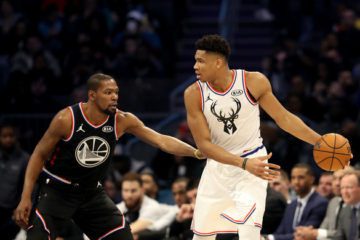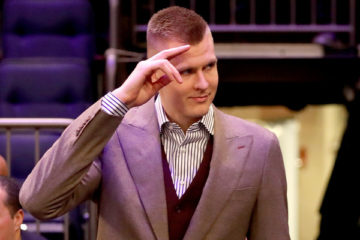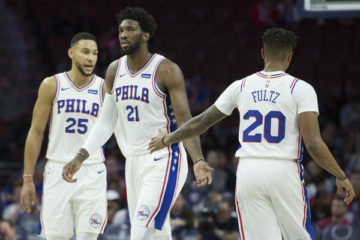Fantasy Basketball 2013-14: In The Bonus – Waiver Targets Week 14 – Play for Keeps pt 1
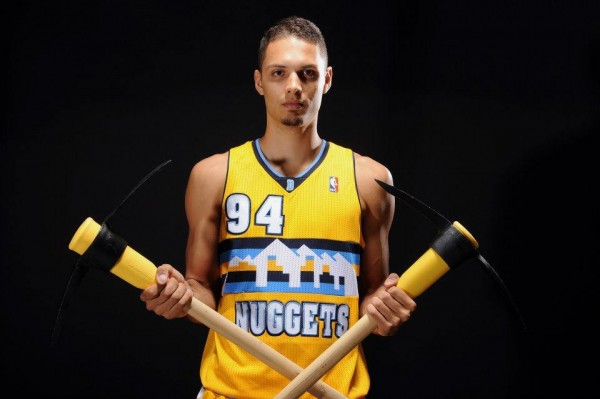
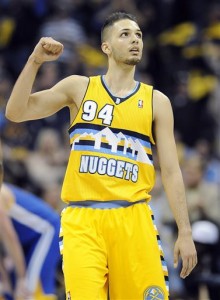
Before getting to this week’s waiver finds, I want to discuss a big of keeper league strategy. I’m a big fan of keeper leagues myself, as I find it more fun to build a team over multiple seasons with potential of being an annual dominant force in the league. I also have in the past enjoyed taking on new dynasty league teams that needed to be totally rebuilt, and being a Magic fan, I’ve been watching a total rebuild go on in real life for the past couple of seasons and it’s fun to watch the progress. This week I’ll share my advice for those trying to win now and next week for those looking to build for later.
As a keeper league GM, there are really only two slots you can fall into: contender or rebuilder. I guess “rebuilder” is a bit of an overstatement for some teams who are fairly close to being a contender but far from the bottom of the league. That gray area between the two is not an area you want to be in. You need to decide now if you’re going to either make moves that help you have a shot to win it all this year or make moves that aim toward being a competitor next season. If you’re not sure, look over the past three weeks’ results and see how your team fared in comparison to the top few teams in the league. Are they far and away superior overall or are you behind the curve but close enough that a couple of “now” moves could catapult you up to their level?
It’s not every season that you can say you legitimately have a shot to win the championship. You never know if your team will go from great to poor in one offseason. Take for example if last season you owned Brook Lopez, Russell Westbrook, Al Horford and Omer Asik. With a core like that at the end of last season, you probably felt strongly that you’d be a top tier team this season as well. A Dwight Howard trade (that totally took away Asik’s relevance) and a few major injuries later and you’re stuck in quite the predicament. So, when you have a shot to take the title there’s no other way to handle it than to go ALL IN. By “all in” I mean every move you make needs to be to win now regardless of if it’s not as favorable for you going into next season. That year of bragging rights (and maybe prize money?) is well worth leaving your team a little more work in the offseason rather than sitting as is and coming in third place with a seemingly competitive team next season. If you go all in and come up just short, at least you know you did all that you could to go for it. If you remain stationary and come up just short, you have a year to ask yourself, “What if I had just traded X young player for Y older vet?” No one wants to be left with that thought.
An easier decision would present itself if you have a star player who is out for the season. In this case, you flip him to a bottom tier team for a similar healthy player. For instance, if you had Al Horford or Brook Lopez you’d hope one of the rebuilding teams has a guy who is not an ideal future piece yet still very productive like Tim Duncan, Zach Randolph or Carlos Boozer. Your selling point to them is simple: they’re tanking, so trading a productive aging vet like one of those three for an out-for-the-season younger player who is a better future option but won’t accumulate stats for them now (thus making their record even worse improving their draft pick) is a no-brainer. Let’s face it, there’s probably more tanking in your keeper league than there was when LeBron was suiting up in the green and gold of St. Vincent-St. Mary’s, so the bad teams you’re hoping to trade with should love the idea of improving next year by getting worse this year. Now of course try for the best possible trade target before going after the aging vet because some tankers may give a completely equal player that’s healthy just to improve their tanking plans. So, first target guys like Al Jefferson, Serge Ibaka or Spencer Hawes, but really this just depends on what the teams on the bottom in your league have rostered to aim for.
Harder decisions include those surrounding players who are healthy, younger and have really nice upside but aren’t going to help you NOW as much as some bigger contributors that are on the back end of their careers. Selling a player like Trey Burke for Tony Parker, Alec Burks for Paul Pierce, or Jonas Valanciunas for any of the big men I’ve listed above as targets is definitely worth consideration. To sum up, just have no fear or concern for the future; focus only on what makes you better for your playoff run to the championship and use the position of lesser teams to your advantage. In two weeks I’ll be using this space to discuss your fantasy playoff schedule and how you should be monitoring that when making decisions. (For example, the schedule makes players like Joe Johnson and other Nets a bit more valuable because they play four games each week of the fantasy playoffs. As I said, I’ll delve into that more in two weeks.)
Here are this week’s waiver targets:
Evan Fournier (Owned in 0.4% of leagues) – With the news of Nate Robinson having to have ACL surgery, it opened up 19 minutes of playing time to be dished out to the other Nugget guards. Most thought of Randy Foye but he’s already been starting and playing over 32 minutes a night the last 30 days. I can’t imagine the Nuggets giving him much if any more court time than that, and instead I see most of Nate’s minutes going to a guy that a lot of us stat-heads hoped would get more time at the start of the season: Evan Fournier. Fournier has hovered around 21 minutes a night but with this injury he should see close to or over 30 a night. More importantly, he has the skills to deliver very nicely in that extra playing time. Fournier has shown flashes this season, and now that he’ll be unleashed, he should be owned in most fantasy leagues. Nate got hurt at the start of the Nuggets game on Wednesday night and Fournier played 38 minutes that night and again received 38 minutes on the court on Friday night. In those two games, he’s averaged 18.5 points, 5.5 rebounds, three assists, two steals and three treys per game. Yeah, he can be that good, and after his Friday night repeat of Wednesday he’ll likely go from 0.4% owned to 80% owned by the end of this weekend. Now it does need to be noted that Ty Lawson missed both of those games so Evan’s numbers are surely inflated. He won’t get twenty shots a night like he did this week, but he will still have the opportunity to put up big fantasy numbers. I think Fournier will see around 30 minutes a night and average about 15.0 points and 3.0 assists with solid steals and threes. I’m sure you could find a spot for those kind of numbers on your team the rest of the way. A lot of scouts compared Fournier to Manu Ginobili, and that’s the role he’ll be in now, so let’s see if he can fit that bill.
Andray Blatche (50%) – Blatche was mentioned in my week nine column as the guy I thought would be the primary beneficiary of stats after the Nets lost Brook Lopez for the season. It took Andray a bit to really settle into the role after he missed four games at the end of the year due to personal reasons, but it appears now that Blatche is putting it all together and becoming the fantasy asset we all knew he could be with Lopez out. In January, his stats are up a bit but specifically over the last six games he has really shown his ability to deliver the goods to his owners, averaging 17.0 points, 7.7 rebounds, two assists, 1.2 steals and 1.2 blocks while shooting 57% from the field and 77% from the free throw line. Those are some serious numbers and there’s no reason to think he can’t keep it up unless the Nets make a trade (which isn’t all that likely). Those steals, blocks and percentages—to go along with the points and boards—will really help your team out the rest of the way, and as noted above, the Nets have a great fantasy playoff schedule so he can really help you down the stretch if all stays even par. Blatche’s usage rate is at a season high 28.5% and climbing, which shows that he is getting plenty of opportunities when he’s on the court for the Nets. He should be owned in all fantasy formats.
Mario Chalmers (45%) – When you think of the Heat, all you think of is their Big Three but Chalmers is quietly a fantasy team ninja, helping out in the harder to gain categories while not harming you anywhere. Sure, he’s not going to score a lot of points for you, but he’ll still put up around ten a night while knocking down threes and getting nightly swipes to boost your steals nicely. Also, Mario can still make do as a point guard. He’ll give you around five dimes per night, which isn’t big, but with his help in other areas, it’s gravy on top. One thing that’s made Mario more productive for his owners has been his improved shooting from the field. At 46% on the year he is a good step up from any of his previous NBA seasons, showing that he’s a true vet and getting better at not only his jump shot but more specifically his shot selection. The Heat also have a 4-4-4 playoff schedule and Chalm can really boost you in tough areas as a low end of the roster type.
DeMarre Carroll (11%) – Speaking of quietly contributing in the tougher to find categories, Carroll has been having a really nice under the radar season for the Hawks. Carroll was named the starting SF for the Hawks before the season and nobody batted an eye, assuming he was just there for defensive purposes. This was true, but Carroll really stepped up his offensive efficiency as well. Not only has he been pulling down over five boards and over 1.5 steals on the season, he also has greatly improved his catch-and-shoot game. To be more specific, 79.5% of Carroll’s field goals made have been catch-and-shoot or lay-in, while 96% of his three-point makes are catch-and-shoot. He’s shot 46.6% from the field on the season and 36.6% from behind the arc, but in his 11 January games, Carroll has shot an amazing 47.7% from three-point land. In January, he has an eFG% of 63.6% while averaging 13.1 points per game. Now this hot shooting will have to cool down a bit but if he can even stay in the vicinity of where he is now while keeping up his steals, you have a really nice stat filler here. The points, threes, steals, decent boards and percentages are easily enough to have Carroll owned in any 12-team leagues or deeper.
Mike Dunleavy (15.8%) – Dunleavy is simply just stepping up where a void was left. The Bulls losing Derrick Rose for the year and subsequently trading Luol Deng opened up plenty of playing time for the 33-year-old Dunleavy. Leavy has done exactly what the Bulls need of him and surprisingly kept himself fantasy relevant for most 12-team leagues and especially deeper leagues. Most thought the Bulls would look to the future and give Tony Snell a good bit of the minutes freed up by Deng’s departure, but Snell has stayed around 20 minutes a game while Leavy has stayed around 30 minutes and been more effective. Don’t expect anything major from him, but he should be able to sustain his double digit scoring (he’s scored in double figures in 10 of last 12 games) and add up some quality three-point numbers. Also, Mike has been getting over a steal a night and 0.7 blocks per game over the last 30. If you need consistent points, threes and steals with an occasional block, grab Dunleavy off the wire and use him up. (If you haven’t noticed, this column is littered with those types because I am a strong believer in adding those tougher to find and less attractive category fillers, compared to the average owner who looks at just points, boards and assists.)
Alec Burks (30%) – Burks came into the year with a little bit of hype, especially in deeper leagues, after being announced as the Jazz’s starting SG. He really struggled out of the gate in bringing his ‘A’ game consistently, by forcing things on offense way too much. His frustration often times showed in his nightly outputs. After a rough November, Burks had a much improved month of December but still struggled to be consistent. On January 10th, Gordon Hayward missed a game due to a hip flexor and Jazz coach Tyrone Corbin told Burks that he needed him to step up on offense in Hayward’s absence. Burks did just that. Over those five games Hay was out, Burks averaged 18.8 points, four assists and just under one steal a game. When Hayward returned, most expected a decline but besides an obvious minor points drop, Burks has still been effective in the three games since Hayward has returned to the Jazz lineup. Burks is mostly a scoring booster and is extra effective in leagues that have “free throws made” as a category, as Burks has hit 4.5 FTM per night in January.
All percentages were gathered from ESPN.com
Follow me on twitter @BigZack44 for more fantasy analysis and to answer any questions you may have.


